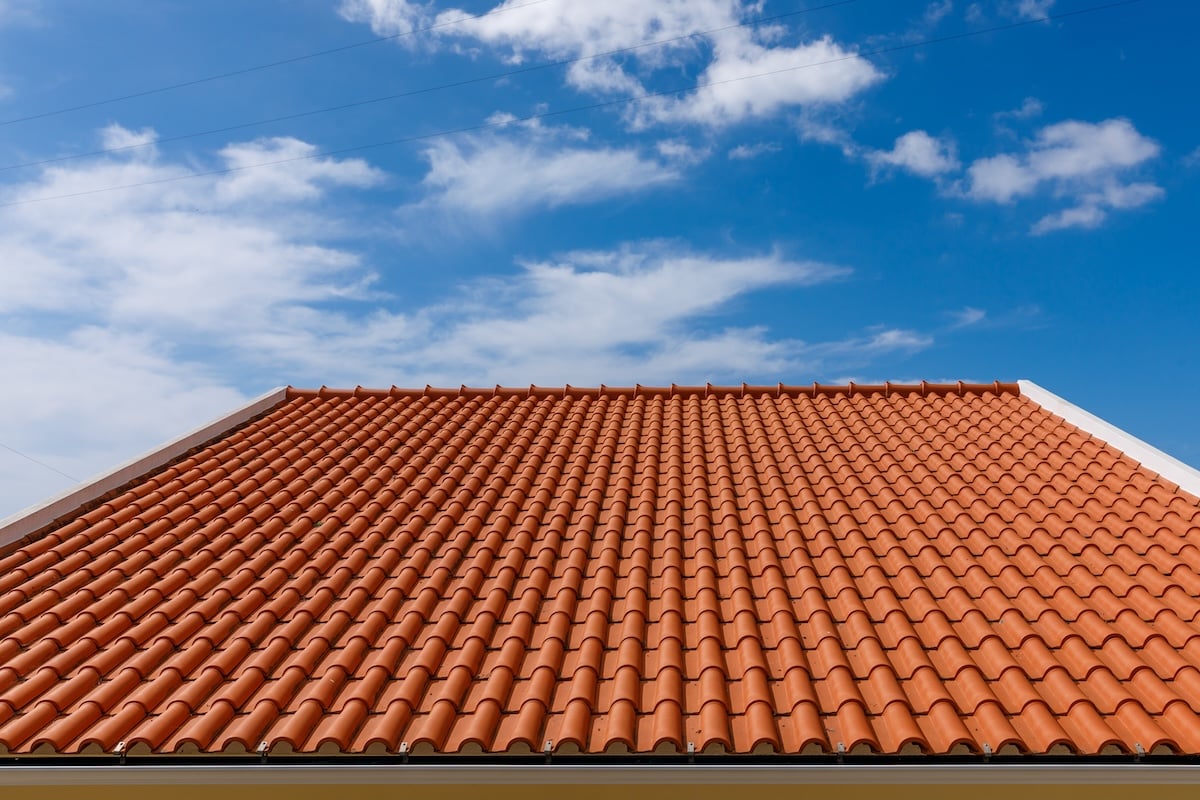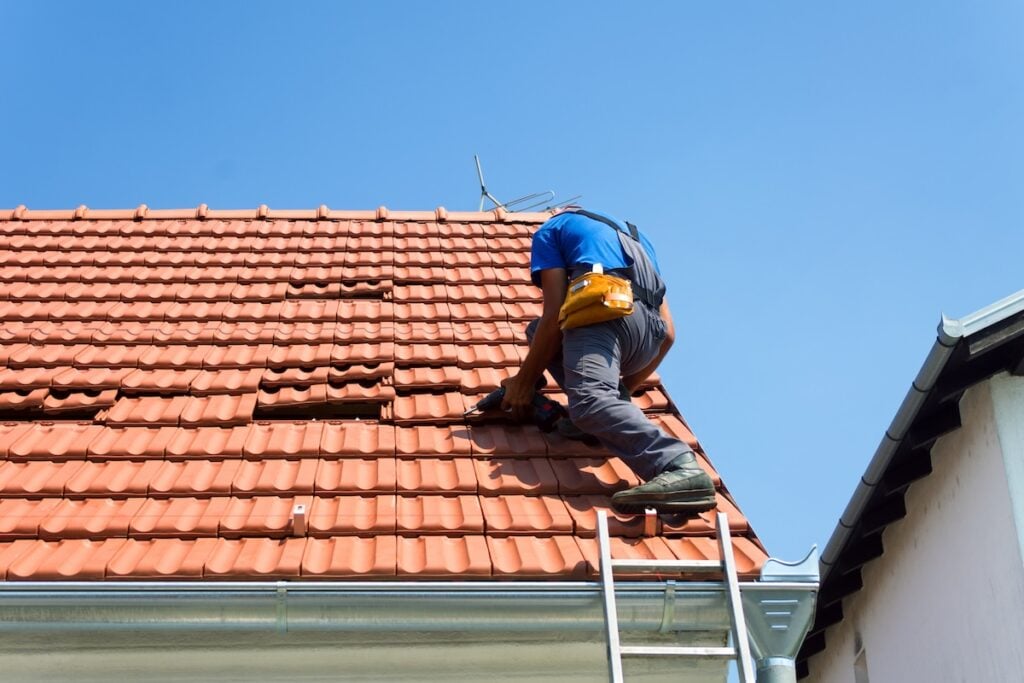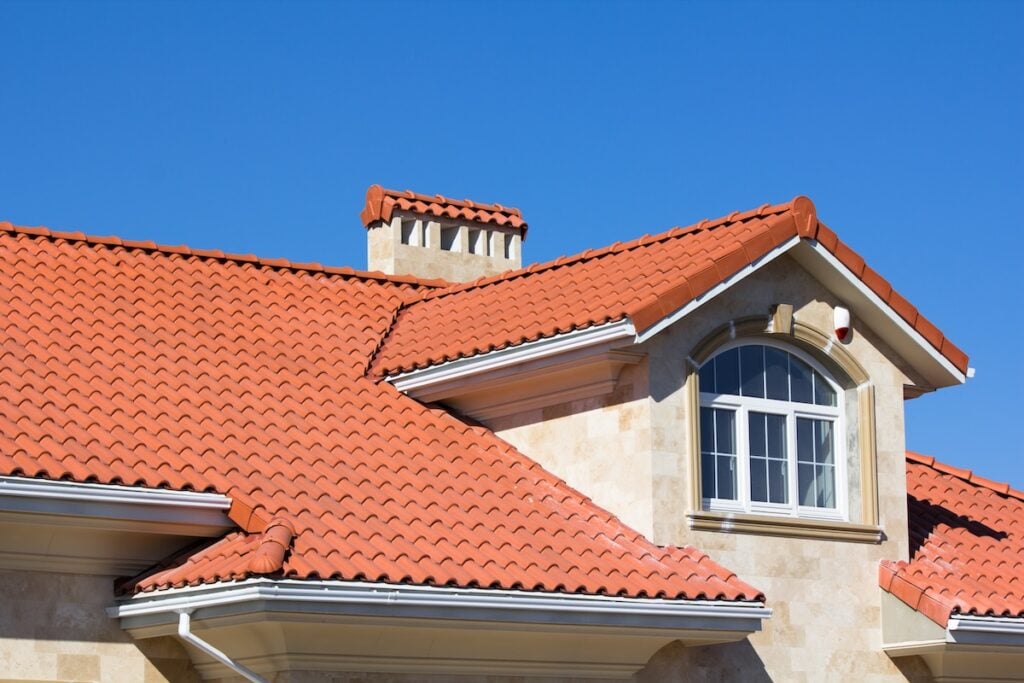

Tile Roof Replacement: How It Works & What To Expect
Posted July 31st, 2025 | 7 min. Read
Tile roofs are among the most durable and attractive roofing systems available, but even the best materials eventually need replacement. Understanding the tile roof replacement process helps you make informed decisions about your home’s most important protective barrier.
This comprehensive guide covers everything you need to know about tile roof replacement, from recognizing when it’s time for a new roof to understanding the step-by-step installation process. We’ll explore different tile materials, costs, timelines, and what you can expect when working with professional roofing contractors.
Here’s what we’ll cover:
- Signs that indicate your tile roof needs replacement
- Different types of tile roofing materials and their benefits
- The complete tile roof replacement process
- Cost factors and budgeting considerations
⚠️ Signs Your Tile Roof Needs Replacement

Recognizing when your tile roof requires replacement rather than simple repairs can save you money and prevent costly water damage to your home. Several clear indicators signal it’s time for a complete tile roof replacement.
- Age of the Roof: Tile roofs last 50-100 years, depending on material and weather. If your roof is nearing or past its lifespan, replacement is necessary, even if tiles seem intact.
- Widespread Tile Damage: A few cracked tiles are easy to fix, but widespread cracking or damage across large sections signals the need for replacement, especially if structural integrity is at risk.
- Underlayment Issues: Deteriorated underlayment leads to water stains, mold, or leaks. Since fixing it requires removing tiles, a full replacement is often more cost-effective.
- Structural Sagging: Tile roofs are heavy, and sagging can indicate structural failure. Professional assessment is critical, and replacement may be required.
- Recurring Leaks: Persistent leaks, even after repairs, often point to underlying issues with the roof structure, underlayment, or flashing that require full replacement.
Types of Tile Roofing Materials
Understanding your tile options helps you make the best choice for your home’s style, budget, and local climate conditions. Each material offers distinct advantages and considerations.
- Clay Tiles: Durable and fire-resistant, clay tiles last 75–100 years and come in styles like Spanish and Mission. Best for warm, dry climates with minimal freeze-thaw cycles.
- Concrete Tiles: Affordable and versatile, concrete tiles mimic clay or slate and last 50–60 years. Lighter than clay, they suit various climates and homes with lower structural capacity.
- Slate Tiles: Luxurious and long-lasting, slate can exceed 100 years but requires strong structural support and expert installation. Ideal for steep-pitched roofs and high-end designs.
- Composite Tiles: Lightweight and eco-friendly, composite tiles mimic clay or slate and work in diverse climates. They offer good durability and moderate pricing.
✅ 6 Step Tile Roof Replacement Process

Understanding the step-by-step process helps you prepare for your tile roof replacement project and know what to expect at each stage.
1. Initial Inspection and Assessment
Your roofing contractor begins with a thorough inspection of your existing roof structure, identifying any damage to decking, rafters, or support systems. This inspection determines whether additional structural work is needed before installing new tiles.
The contractor also assesses your home’s ability to support the weight of new tiles, especially if you’re switching tile types. They’ll check for proper ventilation, inspect flashing around chimneys and vents, and identify any code compliance issues.
2. Obtaining Permits and Planning
Most tile roof replacements require building permits. Your contractor handles permit applications and ensures all work meets local building codes. This phase also includes finalizing material selections, delivery scheduling, and establishing project timelines.
Proper planning includes arranging for waste disposal, protecting landscaping and outdoor furniture, and coordinating with any other trades needed for related work like gutter replacement or structural repairs.
3. Removing Existing Roofing Materials
The removal process starts with carefully taking off old tiles, underlayment, and any damaged decking materials. Professional crews use proper safety equipment and techniques to prevent damage to your home’s structure and surrounding property.
During removal, contractors inspect the roof deck for damage, rot, or structural issues that weren’t visible during the initial inspection. Any problems discovered are addressed before proceeding with installation.
4. Structural Repairs and Preparation
Any necessary structural repairs are completed before new material installation. This might include replacing damaged roof decking, reinforcing rafters, or upgrading structural elements to support the new tile system properly.
The roof deck is cleaned and prepared for new underlayment. Proper deck preparation ensures the new roofing system performs optimally throughout its lifespan.
5. Installing Underlayment and Flashing
Quality underlayment installation is critical for long-term roof performance. Contractors install appropriate underlayment for your climate and tile type, ensuring proper overlap and sealing. All flashing around roof penetrations, valleys, and edges is installed or replaced to prevent water infiltration.
Modern underlayment materials offer superior protection compared to older systems, providing an additional barrier against moisture and weather infiltration.
6. Tile Installation and Final Inspection
Tiles are installed according to manufacturer specifications and local building codes. Professional installers ensure proper alignment, spacing, and attachment for optimal performance and appearance. Each tile is carefully positioned and secured to withstand local wind conditions.
After installation, a comprehensive final inspection ensures all work meets quality standards. The contractor checks for proper tile alignment, secure attachment, and adequate weather protection before considering the project complete.
💵 Cost Factors and Budgeting Considerations

Several factors influence the total cost of tile roof replacement, and understanding these helps you budget appropriately for your project.
Material Costs
Tile material is a significant part of your total project cost. Clay tiles are typically more expensive than concrete, while slate tiles come at a premium price. The complexity of the tile profile and any custom colors or textures also impact material costs.
High-quality underlayment, flashing, and accessories add to the expenses but are crucial for long-term roof performance. Investing in quality materials often saves money in the long run compared to cheaper options that may require early replacement.
Labor and Installation Costs
Professional installation requires skilled craftsmen experienced in tile roofing techniques. Labor costs vary by region and project complexity, but tile installation is generally more expensive than basic shingle installation due to the specialized skills involved.
Steep roofs, complex layouts, and multiple roof levels can further increase labor costs. However, professional installation is critical for warranty coverage and optimal roof performance.
Structural Modifications
If your home needs structural modifications to support tile roofing, these costs can significantly affect your budget. This may include reinforcing rafters, upgrading roof decking, or modifying support systems.
While these modifications add to initial costs, they are essential for safe and long-lasting tile roof performance. Installing tiles without proper structural support can lead to safety hazards and expensive repairs.
Permits and Additional Services
Building permits, waste disposal, and related services add to project costs but are necessary for legal compliance and smooth project execution. Some contractors include these costs in their estimates, while others list them separately.
Additional services like gutter replacement, skylight installation, or chimney work can be completed during roof replacement, potentially saving money compared to tackling these projects separately.
👉 Choose Certified Roofing Solutions for Your Tile Roof Replacement
When it comes to tile roof replacement, choosing the right team makes all the difference. At Certified Roofing Solutions, we combine years of specialized experience, expert craftsmanship, and a commitment to customer satisfaction to deliver exceptional results every time. As GAF Master Elite Contractors and one of Inc. 5000’s fastest-growing roofing companies, we’ve earned the trust of countless homeowners across Florida.
From personalized solutions to high-quality materials and long-lasting warranties, we’re here to ensure your new tile roof protects and enhances your home for decades to come. Ready to work with a team you can trust? Contact us today to schedule your consultation. Let’s build something extraordinary together!

